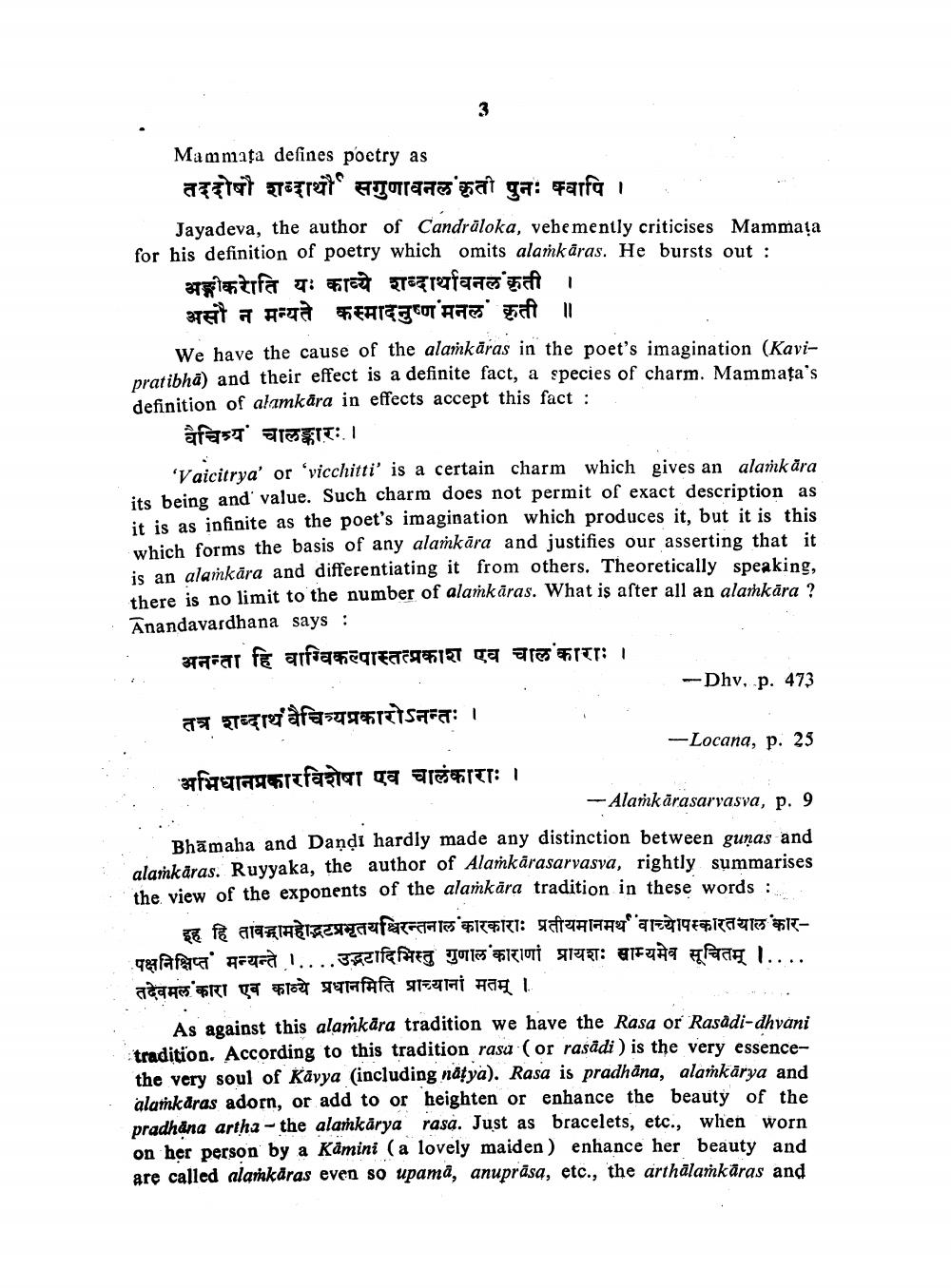Book Title: Sambodhi 1988 Vol 15 Author(s): Ramesh S Betai, Yajneshwar S Shastri Publisher: L D Indology Ahmedabad View full book textPage 8
________________ Mammața defines poetry as तददोषौ शब्दाथी सगुणावनलंकृती पुनः क्वापि । Jayadeva, the author of Candräloka, vehemently criticises Mammağa for his definition of poetry which omits alamkāras. He bursts out : अङ्गीकरोति यः काव्ये शब्दार्थावनल कृती । असौ न मन्यते कस्मादनुष्ण मनल कृती ॥ We have the cause of the alamkāras in the poet's imagination (Kavipratibha) and their effect is a definite fact, a species of charm. Mammata's definition of alamkära in effects accept this fact : वैचित्र्य चालङ्कारः । 'Vaicitrya' or 'vicchitti' is a certain charm which gives an alamkära its being and value. Such charm does not permit of exact description as it is as infinite as the poet's imagination which produces it, but it is this which forms the basis of any alamkāra and justifies our asserting that it is an alamkāra and differentiating it from others. Theoretically speaking, there is no limit to the number of alamkāras. What is after all an alamkāra ? Anandavardhana says: अनन्ता हि वाग्विकल्पास्तत्प्रकाश एव चाल काराः । -Dhv, p. 473 तत्र शब्दार्थ वैचित्र्यप्रकारोऽनन्तः । -Locana, p. 25 अभिधानप्रकारविशेषा एव चालंकाराः। - Alamkārasarvasva, p. 9 Bhāmaha and Dandi hardly made any distinction between gunas and alankaras. Ruyyaka, the author of Alamkarasarvasva, rightly summarises the view of the exponents of the alaṁkära tradition in these words : इह हि तावद्भामहोद्भटप्रभृतयश्चिरन्तनाल कारकाराः प्रतीयमानमर्थ वाच्योपस्कारतयाल कारपक्षनिक्षिप्त मन्यन्ते ।....उद्भटादिभिस्तु गुणाल काराणां प्रायशः साम्यमेव सूचितम् ।. तदेवमल कारा एव काव्ये प्रधानमिति प्राच्यानां मतम् । As against this alamkära tradition we have the Rasa or Rasadi-dhvani tradition. According to this tradition rasa (or rasādi) is the very essencethe very soul of Kavya (including natya). Rasa is pradhāna, alamkārya and alamkaras adorn, or add to or heighten or enhance the beauty of the pradhana artha-the alamkārya rasa. Just as bracelets, etc., when worn on her person by a Kamini (a lovely maiden) enhance her beauty and are called alarkäras even so upama, anuprāsa, etc., the arthalamkāras andPage Navigation
1 ... 6 7 8 9 10 11 12 13 14 15 16 17 18 19 20 21 22 23 24 25 26 27 28 29 30 31 32 33 34 35 36 37 38 39 40 41 42 43 44 45 46 47 48 49 50 51 52 53 54 55 56 57 58 59 60 61 62 63 64 65 66 67 68 69 70 71 72 73 74 75 76 77 78 79 80 81 82 ... 222
